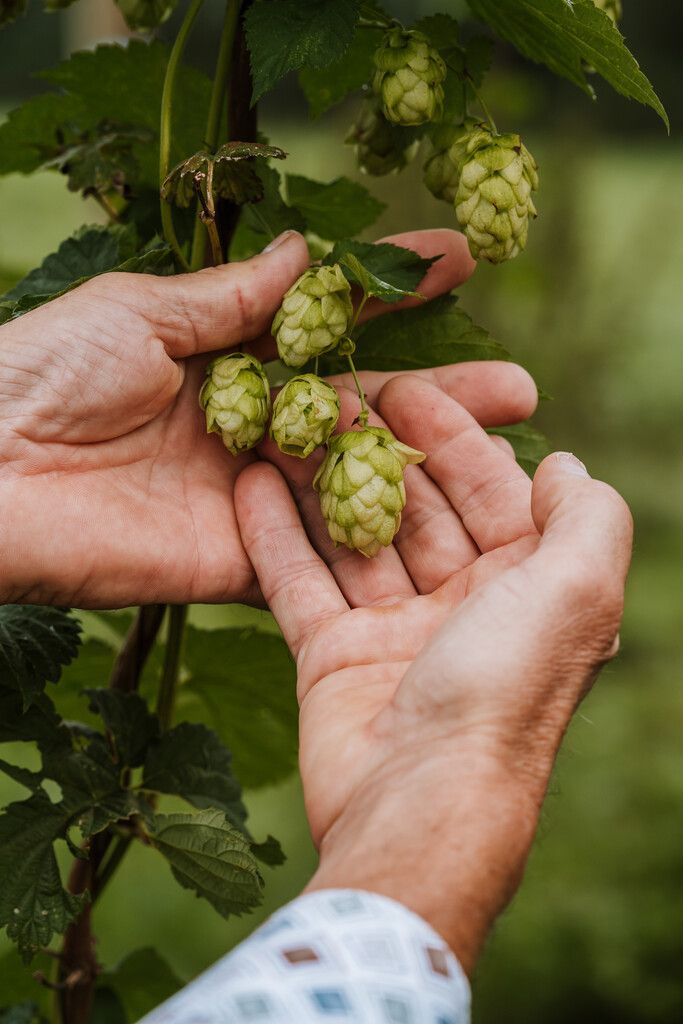MeierijHop
Right on the edge of Meierijstad, in the countryside of the village of Boskant near Sint-Oedenrode. Surrounded by plots belonging to a neighboring tree nursery lies the hop field of Leo and Frank Vos.
Right on the edge of Meierijstad, in the countryside of the village of Boskant near Sint-Oedenrode. Surrounded by plots belonging to a neighboring tree nursery lies the hop field of Leo and Frank Vos. Father and son are livestock and arable farmers and have been running MeierijHop together since 2021. This is professional hop cultivation in a region with a centuries-old history of hop growing. The Boskant hop plantation yields enough hops for 600,000 liters of beer per year.
Fast-growing hop vines
Driving along the Donderdonksedijk, you can’t miss the Vos family’s hop field. On …
Right on the edge of Meierijstad, in the countryside of the village of Boskant near Sint-Oedenrode. Surrounded by plots belonging to a neighboring tree nursery lies the hop field of Leo and Frank Vos. Father and son are livestock and arable farmers and have been running MeierijHop together since 2021. This is professional hop cultivation in a region with a centuries-old history of hop growing. The Boskant hop plantation yields enough hops for 600,000 liters of beer per year.
Fast-growing hop vines
Driving along the Donderdonksedijk, you can’t miss the Vos family’s hop field. On the one-hectare plot, tall wooden poles tower above the field. In autumn and winter, there's little to see of the 2,000 hop plants hibernating underground. But in spring, the plants begin an impressive growth spurt. Within just a few months, the shoots can grow up to seven meters tall. The cones (the flowers of the climbing plant) contain lupulin, the key compound that makes hops an essential beer ingredient — for longer shelf life and that distinctive bitter flavor.
Harvesting, picking, drying
Next to the hop field stands a hall with an impressive hop-picking machine, drying cabinet, and cooling room. A lot is involved in harvesting and processing hops. The machine separates the cones from the vines and leaves. Then, the cones go into a three-layer drying chamber, where the temperature is kept below 60 degrees Celsius to preserve quality. After six to seven hours, the hops are perfectly dried. They are then acclimatized, pressed into pellets, weighed, and packaged. The whole process is completed within 24 hours, allowing the hops to be delivered fresh to local brewers who turn them into regional craft beers.
Local hop culture
Centennial. Cascade. Saphir. Saaz. Target. Willamette. The varieties grown on the Boskant field have beautiful, internationally recognized names — and each one has its own flavor profile. The Meierij region also has a long history with hops. Schijndel was once the hub of hop cultivation here. The oldest record of Schijndel hop growing dates back to the year 1400. By around 1900, hop cultivation had almost entirely disappeared, but it has now made a comeback — along with the renewed interest in craft brewing.
Craft beer from local hops
Curious about beers brewed with hops from MeierijHop? The hop farm itself is not open to visitors, but you can taste the result at café-restaurant De Vriendschap or the regional experience center De Gasthuishoeve. Want to enjoy local hops in a more exclusive way? In spring, some regional restaurants serve hop shoots — the young sprouts of the hop plant. A true delicacy that looks like bean sprouts and has a nutty flavor. A tip for culinary connoisseurs!
This text has been translated using AI.
This is how to reach MeierijHop
5492 VK Sint Oedenrode Plan your route naar MeierijHop
Starting point: from your location

